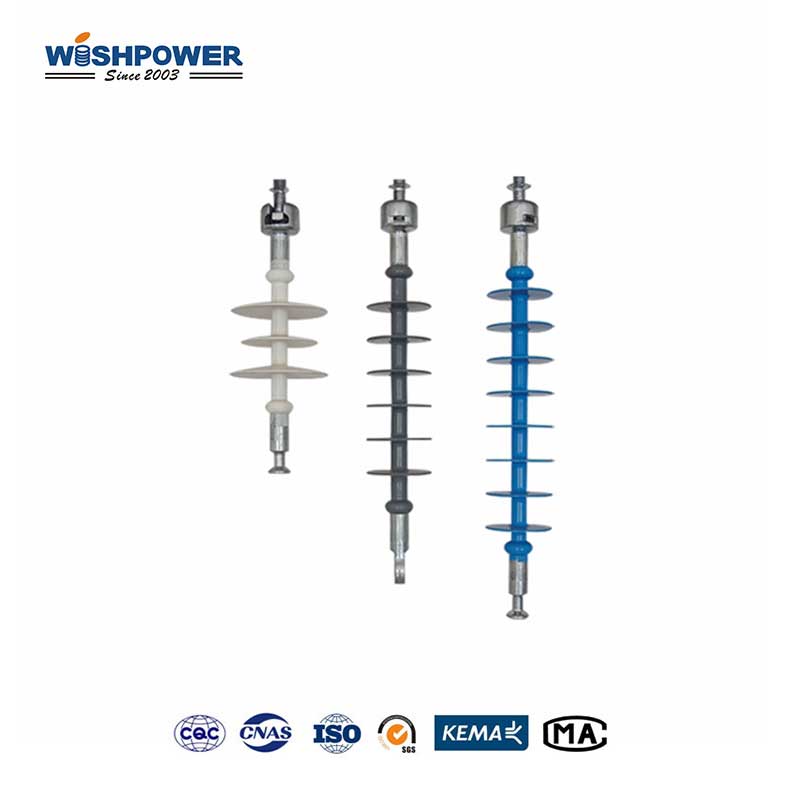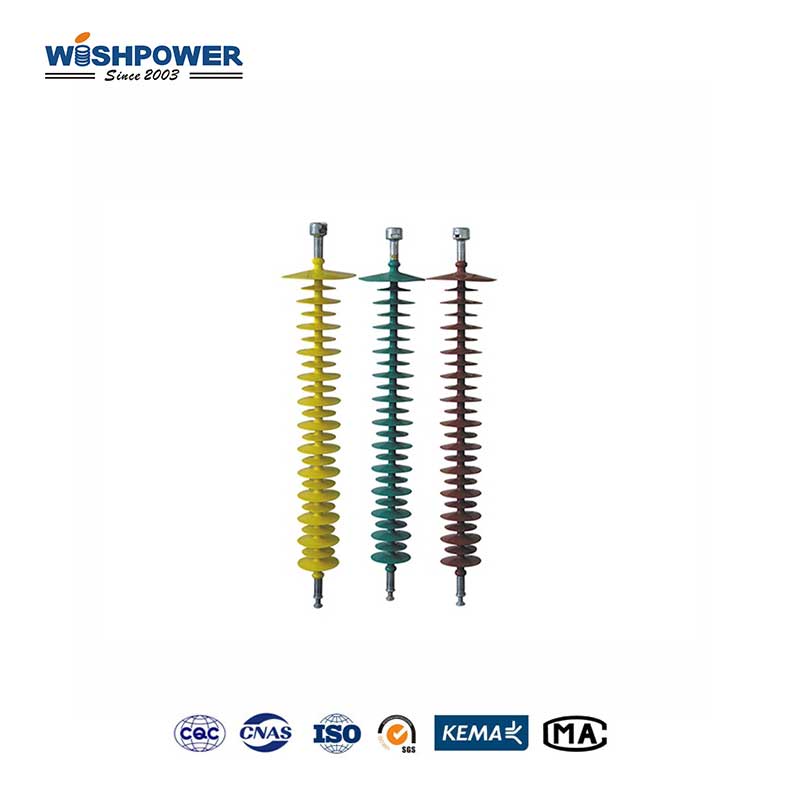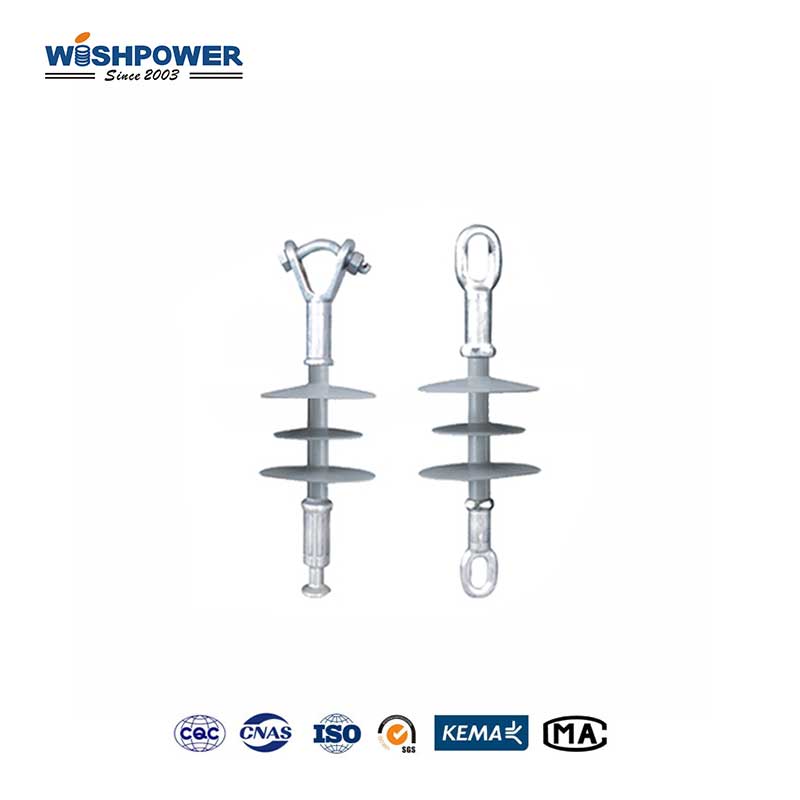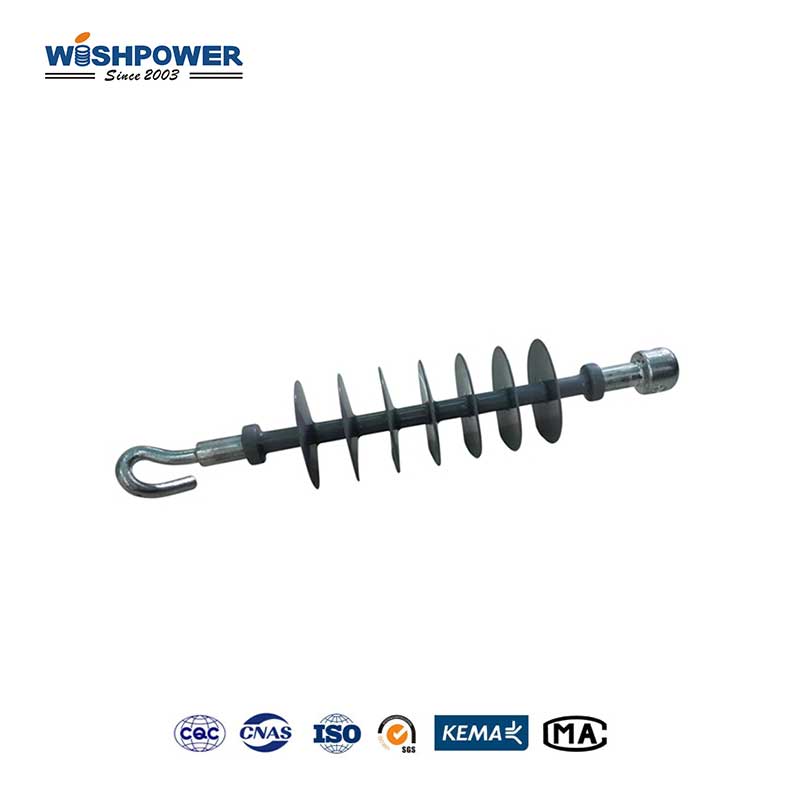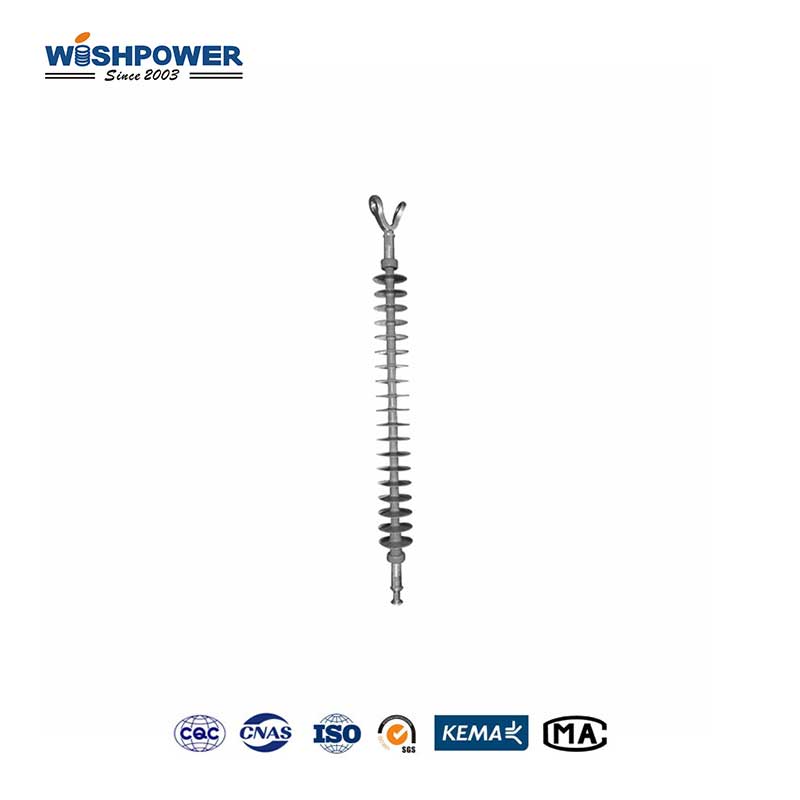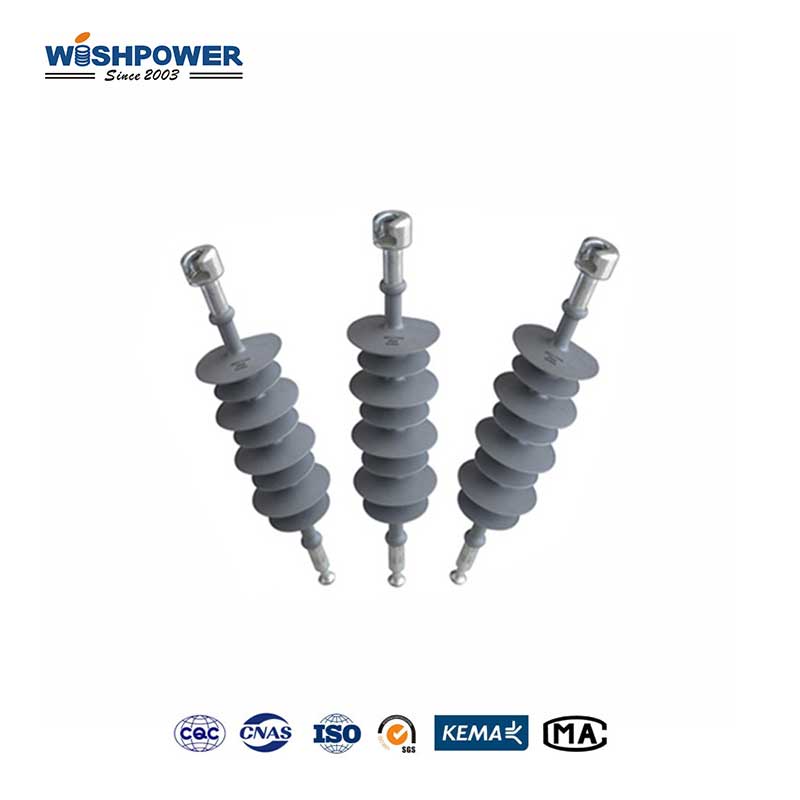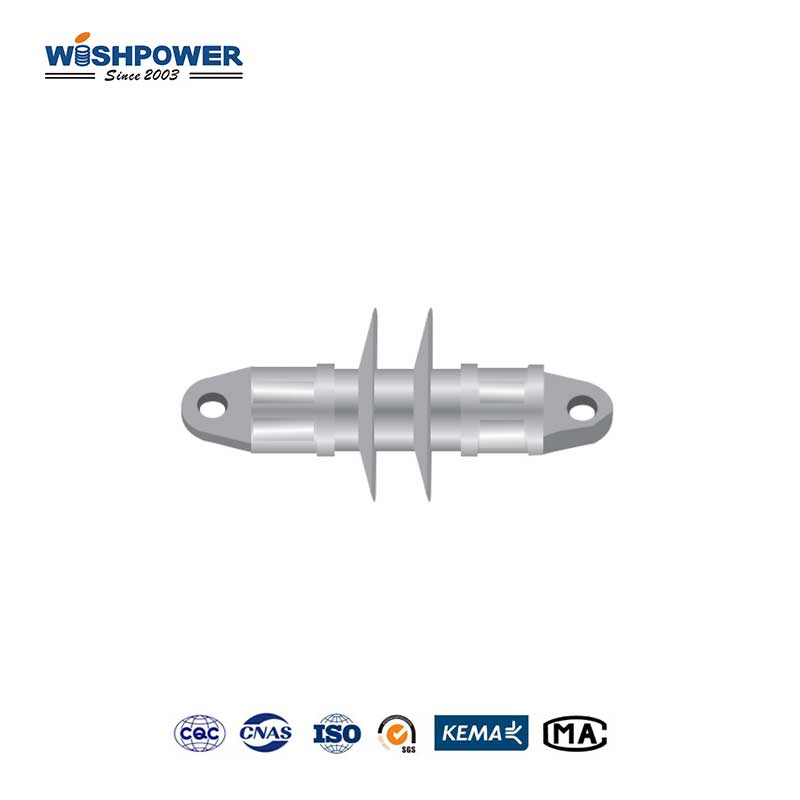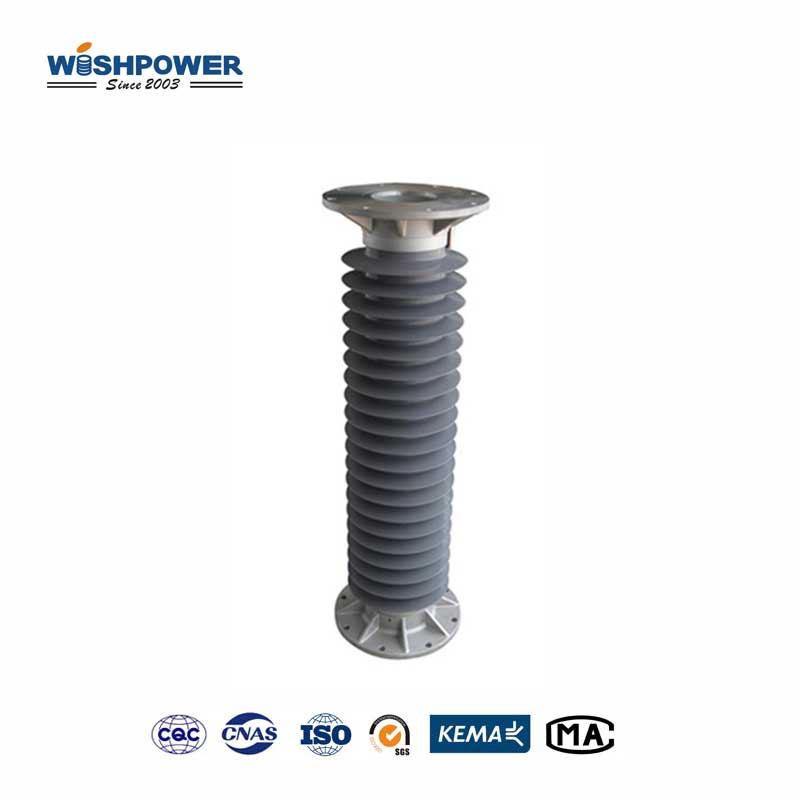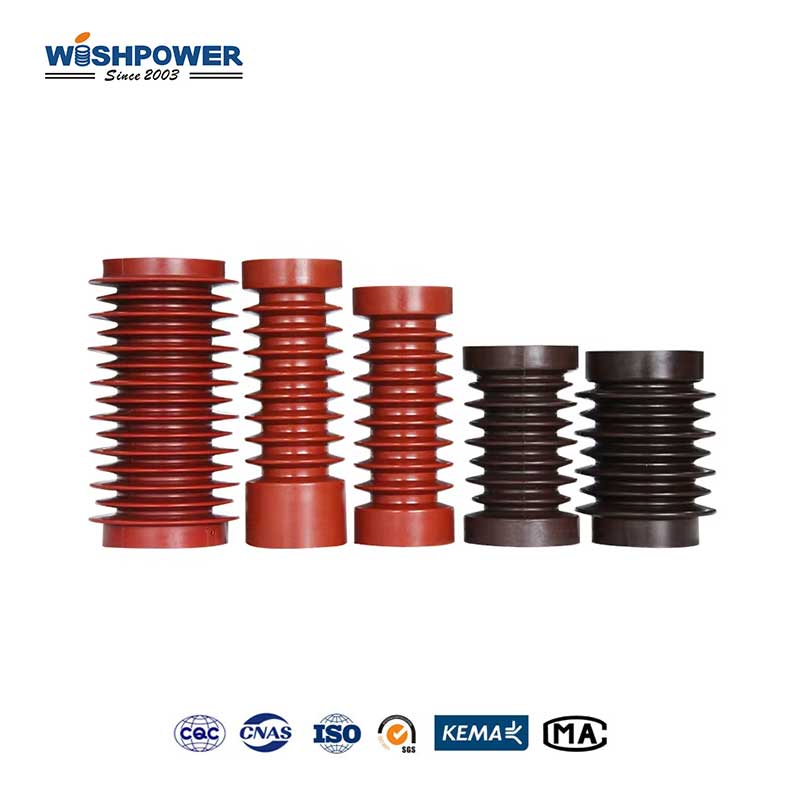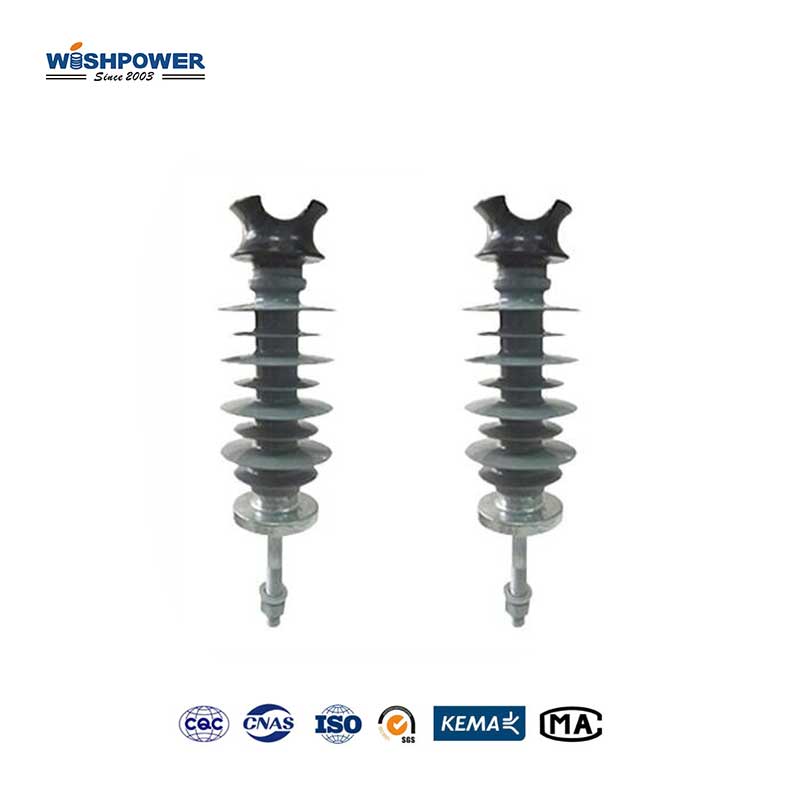Specification
| Product Type |
FXB-1.5/40-Ф28 |
FXB-1.5/40-Ф34 |
| Specified Voltage |
1.5 kV |
1.5 kV |
| Specified Mechanical Tensile Failing Load |
40 kN |
40 kN |
| Specified Mechanical Bencing Load |
/ |
/ |
| Section Length |
290±5 mm |
290±5 mm |
| Min. Insulation Distance |
190 mm |
190 mm |
| Min. nominal Creepage Distance |
250 mm |
250 mm |
| Lightning lmpulse Withstand Voltage(Peak Value) |
125 kV |
125 kV |
| Power Frequency Withstand Voltage Test- Wet |
30 kV |
30 kV |
The table above is just one of our product parameters. If you want more information, please get in touch with info@wishpower.net or download the file below.
What is the Strain Insulator?
The strain insulator is a critical component in power transmission and distribution systems, specifically designed to withstand high tensile forces while maintaining electrical insulation. Their main purpose is to bear and insulate conductors at locations of a considerable mechanical load, such as suspensions, turns, and terminations in transmission lines. It is mainly employed in regions with steep slopes, long arbors, or radical changes in the line angle, where conductor tension is at its peak. The insulators commonly developed by Wishpower are normally made from a composite material that may provide some definitive benefits regarding mechanical properties, resilience to the prevailing climatic conditions, and service life. The composite insulators are comparatively lighter in weight and they give better performance in case of mechanical shock and different climatic conditions. The design also provides provisions for accommodating mechanical loads as well as other factors that may have a detrimental effect on the insulator inclusive of moisture and pollution.
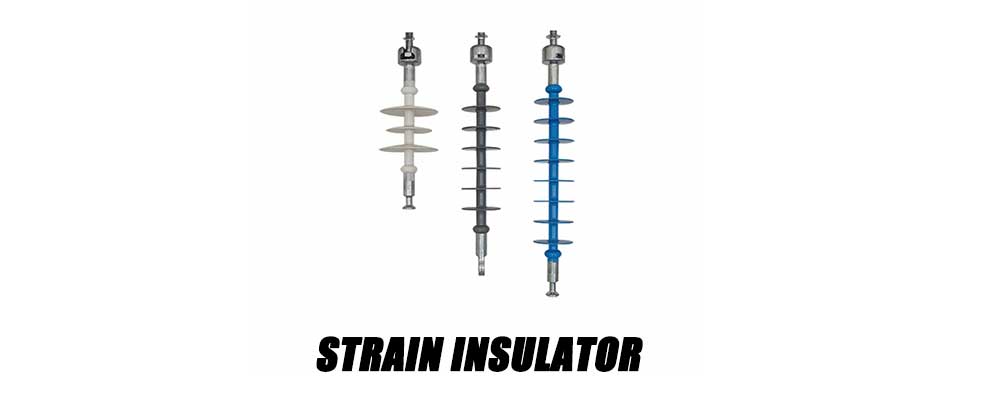
Components
Insulating rod:
The structure of the guy strain insulator is a core rod which is made of glass fiber and epoxy resin. These can be pulled through a process called pultrusion whereby the glass fiber has been placed in the resin and is then drawn through a die at a high temperature to form a super-strong rod. This structure offers a mechanical strength that is among the highest in all the structures but also offers good tensile properties and is resistant to corrosion.
Shed:
The outside of the rod can have an outer layer of silicone rubber or ethylene-propylene-diene monomer rubber, also known as an EPDM shed. It also displays good hydrophobicity hence it can help to prevent moisture accumulation and thereby minimize leakage current and minimize the chances of flashover. It can also protect the environment pollutant and the ultraviolet rays on the face of the rod hence increasing the life span of the insulator.
Metal end connectors:
Usually, the end connectors are hot-dip galvanized steel, stainless steel, or other anti-corrosion metal which is used to fasten the insulator to the line and tower. The end connectors are bonded with a rod by high-strength bonding or mechanically crimped so that only mechanical load is transferred and structural integrity is maintained.
Process characteristics
- High-strength pultrusion process:
The construction of the insulating core rod uses pultrusion technology to guarantee the right glass fiber epoxy composite core rod toughness. In this process the fiber and the resin are closely integrated through a continuous drawing method hence the core rod is tensile in strength and is resistant to corrosion.
- Silicone rubber vulcanization injection molding:
In making the protective jacket, vulcanization injection molding of silicone rubber is done with the aid of a vulcanization injection machine. In high temperatures the jacket made from silicone rubber is uniformly spread on the outer layer of the core rod by a vulcanization injection machine and the silicone rubber is vulcanized to obtain better mechanical strength and electrical properties. This process also helps the conformal silicone rubber jacket possess a very high degree of hydrophobicity, suppress surface leakage current, eliminate flashover, and offer comprehensive protection for the core rod.
- High-precision assembly of end connections:
The metal end connector is tightly connected with the core rod and it is done by high-precision mechanical crimping or by using high-strength adhesive. This process also guarantees extreme tensile strength to the connector such that it can efficiently bear large tension and withstand variations in conditions without loosening or slipping, thereby enhancing the mechanical integrity and safety of the straining insulator.
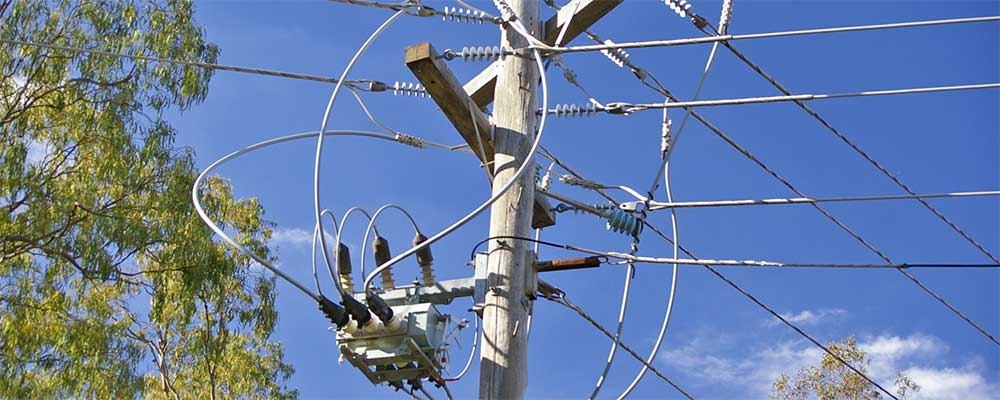
Application
- Mountainous Terrain Transmission Lines:
It is used in rugged, mountainous terrain due to its lightweight nature and high tensile strength. They help reduce the mechanical load while maintaining reliable electrical insulation across long spans, where traditional insulators might be too heavy or less effective.
- High-Pollution Environments:
It is commonly used in high-pollution environments, such as near industrial zones or coastal areas. Their hydrophobic silicone rubber housing minimizes the accumulation of contaminants, reducing the risk of flashovers and ensuring consistent performance even in severe conditions.
- Wind Farms:
In wind farm installations, where space and weight are critical, it connects overhead lines to turbines. Their resistance to UV radiation and ability to withstand high mechanical stresses make them suitable for these applications, ensuring stability and efficient power transmission from remote wind turbine locations.
- Urban Power Distribution:
It is usually used in complex power distribution networks whereby space is severely limited and calls for highly compressed lines. This can be attributed to the fact that they are smaller in size and lighter in weight and therefore installation and maintenance could easily be done in congested urban areas without much fuss about large and cumbersome structures.
- High Voltage Direct Current (HVDC) Lines:
Fiberglass guy strain insulator is applied in HVDC transmission lines because of their performance at high electrical voltage stress. They provide superior mechanical strength as well as electrical insulation hence most preferably used for long-distance transmission with high voltages and currents.
Exhibition

Certificate

Factory

Hot Tags: Strain Insulator, Composite Insulator, China, manufacturers, ISO factory, wholesale, KEMA, high quantity, best, price, low to high voltage






